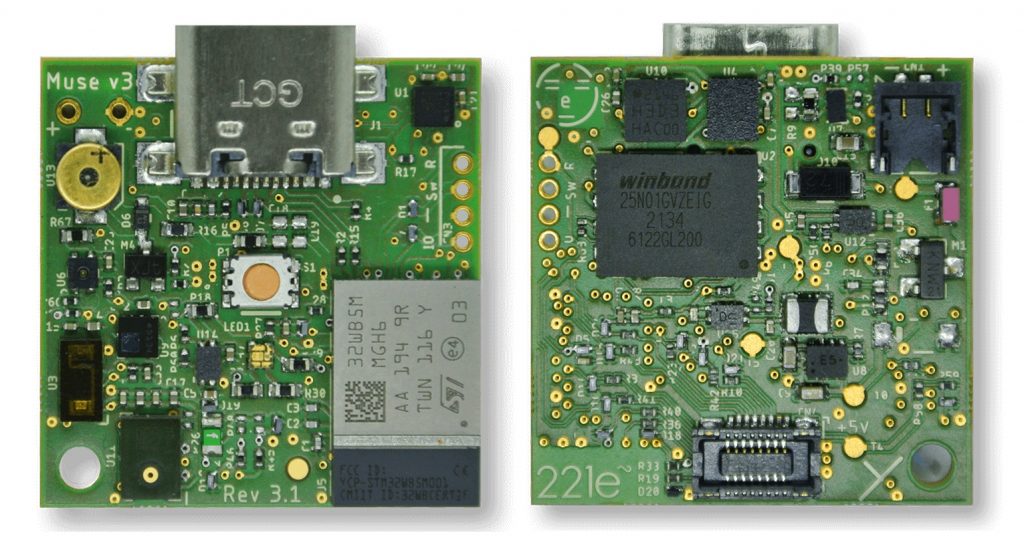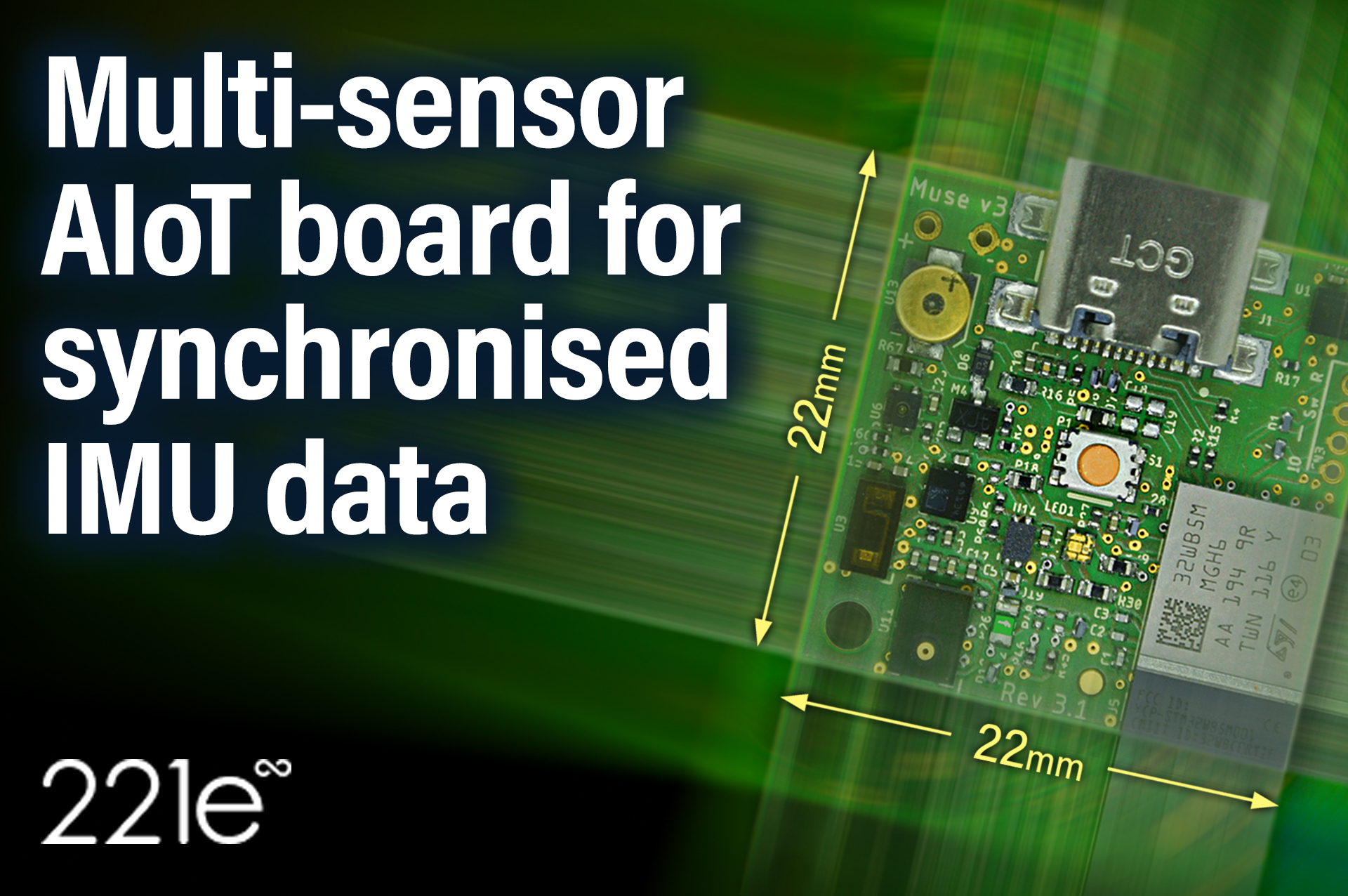Products
Published
14 August 2024
Written by Harry Forster
IMUs have huge potential in smart wearables and industrial IoT applications, but it has been held back by accuracy and synchronisation issues for sensor fusion workloads. If you’ve been struggling with this type of development, you need to know about 221e’s Muse IMU board!
At Embedded World 2024, ipXchange met a very interesting company called 221e, which is doing great things in the wearable, IoT, and industrial spaces. The board that immediately caught our attention was Muse, a miniaturised multi-sensor IMU board that features Bluetooth LE 5 connectivity for linking up to 30 devices. Alternatively, you can use a single unit or embed it into a larger end product. But what exactly is Muse?
What is 211e’s Muse?
Muse features an open-source hardware and software design that is geared towards low-power sensor fusion and edge-AI workloads. This is supported by a Cortex-M4F + Cortex-M0+ architecture supported by 1 MB flash, 256 kB SRAM, and the following on board sensors:
- Accelerometer, gyroscope, and compass for motion tracking
- Light, temperature, humidity, and ambient pressure environmental sensors
- Proximity sensor
- Digital MEMS microphone
Considering that 221e packs all this onto a 22 x 22-mm IMU board, this is rather impressive. Muse even includes a smart push button, LED indicators, and a buzzer for HMI functionality.

If you hook a rechargeable battery up to it (120 mAh), you can even run Muse autonomously and charge it via the USB-C port. And should all those sensors not be enough, or you want to integrate it within a larger design, there’s even an expansion port.
How to use a state-of-the-art IMU board
The true disruptor with Muse is that you can perfectly synchronise the data from multiple IMU boards. The sample rate of these readings goes into the 100s of hertz with high accuracy, and this takes gesture and tracking recognition to the next level.
Multiple Muses can be used to create a great solution for sport and physical rehabilitation wearables. This is aided by 221e’s software solutions, such as its MPE Motion Processing Engine and NeuraSense platform for sensor fusion AI.
With hardware and software development done for you, engineers gain a huge reduction in research and development costs, as well as time to market. The open-source approach also enables you to adjust the design according to your specific needs while still gaining the benefits of what Muse has to offer.
Demonstrating the high accuracy of Muse
ipXchange has previously discussed the use of IMUs for accurate navigation without the use of GNSS, but 221e showed us a demo of this at Embedded World.
A Muse was placed in a car and driven around after being given its initial starting position. The processed fusion data from the high-precision IMU and magnetometer was then used to plot the course of the car. When compared to the GNSS map, Muse follows this path well. This could not be done without the high accuracy and sensor fusion capabilities of this ready-to-use board.
To get connected with 221e for more information, head to our user-defined board page by following the link below. There, you can fill out the form with details of your commercial project – specifying your interest in 221e – and ipXchange will get you connected. It should be fun to see what applications you’ll come up with for Muse.
Keep designing!
You must be signed in to post a comment.

Comments
No comments yet